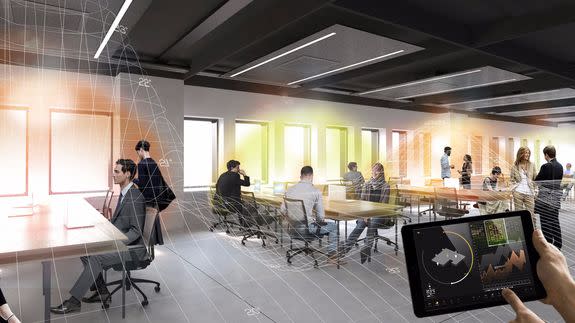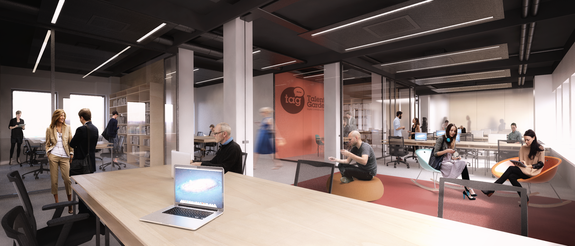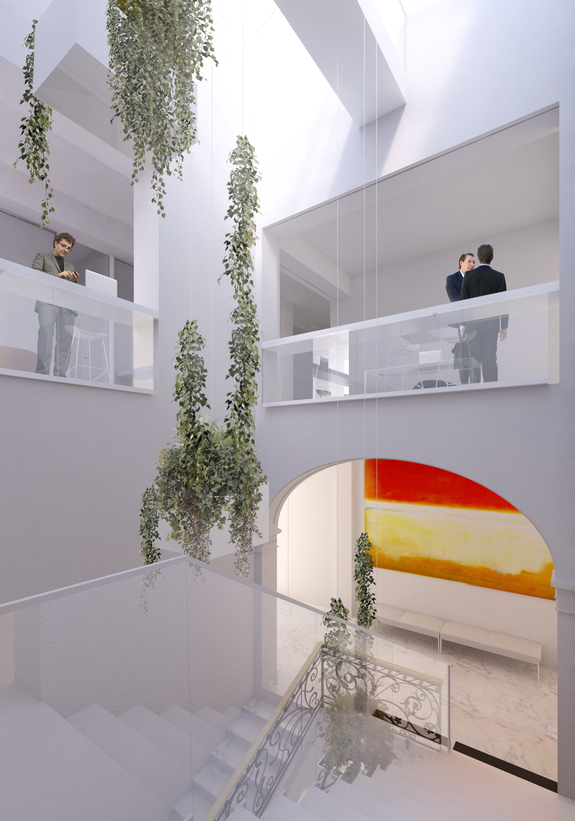This high-tech office will give everyone their own thermal bubble

Carlo Ratti is not a fan of the term "smart city."
The director of MIT's SENSEable City Lab believes the term favours technology over people. In his view, the emphasis should be on using new digital tools that improve quality of life and empower citizens.
"The Internet, which has changed our lives over the past few years, is now entering physical space to become the Internet of things," Ratti, who was in Sydney, Australia for the Media Architecture Biennale, told Mashable Australia. "'Smart cities' is simply the application of the Internet of things at the scale of a city."
SEE ALSO: Björk's new virtual reality experience may be better than Björk in real life
A new office space created by his design firm, Carlo Ratti Associati, will aim to make some of those principles a reality. The building, a redesign of the Agnelli Foundation headquarters in Torino, Italy, will attempt to demonstrate how the Internet of things can help make our spaces more sustainable and sociable.
"The main idea is very simple: Today we use a lot of energy to cool empty spaces," he explained. "In the U.S., we use a lot of energy for heating. During the day, there are homes heated when nobody is there."
If energy and occupancy were better synchronised, waste could be eliminated.

Image: Carlo Ratti Associati ®
In this new office, the digital building management system will automatically alter lighting, heating, air-conditioning and room bookings based on the presence of people, which is communicated via inbuilt sensors. When nobody is present, the Torino building will go on standby, much like your computer.
It will also add an important layer of personalisation through so-called "temperature bubbles" that workers will be able to set with a smartphone app that speaks to fan units in the ceiling. "Your own personal [temperature] setting will follow you through the building," he said.
While the project is experimental, Ratti believes it will prove its worth quickly because of the energy and money saved.
For the designer, the project shows that humans need to come first as the Internet and our tangible spaces merge. "I think the main lesson is that you don't want to start with the technology," he said. Instead, you want to consider usage and what people actually need.
As with anything digital, security issues must also be considered. If a building's core functions are taken online, what is to stop them being hacked?

Image: Carlo Ratti Associati ®
Ratti suggested that openness is vital. "I think openness is really one of the key things you want to build in order to increase resilience," he said. "What you don't want to do is have just one computer for the whole building, because then if that computer is somehow hacked, the whole building could be hacked."
Building for resilience will only become more important as the Internet becomes synonymous with the function of our homes, offices and cities. "When you build a 'cyber physical system' — it can be a nuclear power plant — if someone hacks the digital side, the cyber side, it would have big consequences on the physical side," Ratti said. "It is something we need to be cautious about."
Ultimately, such resiliency might comes via smart systems that emulate biological systems, where everything has a role to play — think of the white blood cells that rush to your hand if you happen to cut yourself. "The system will involve many different units supervising each other and taking action if something goes wrong," Ratti said.
Technologies that act in concert like the functions of the human body may be the answer for truly "smart cities."

 Yahoo News
Yahoo News 